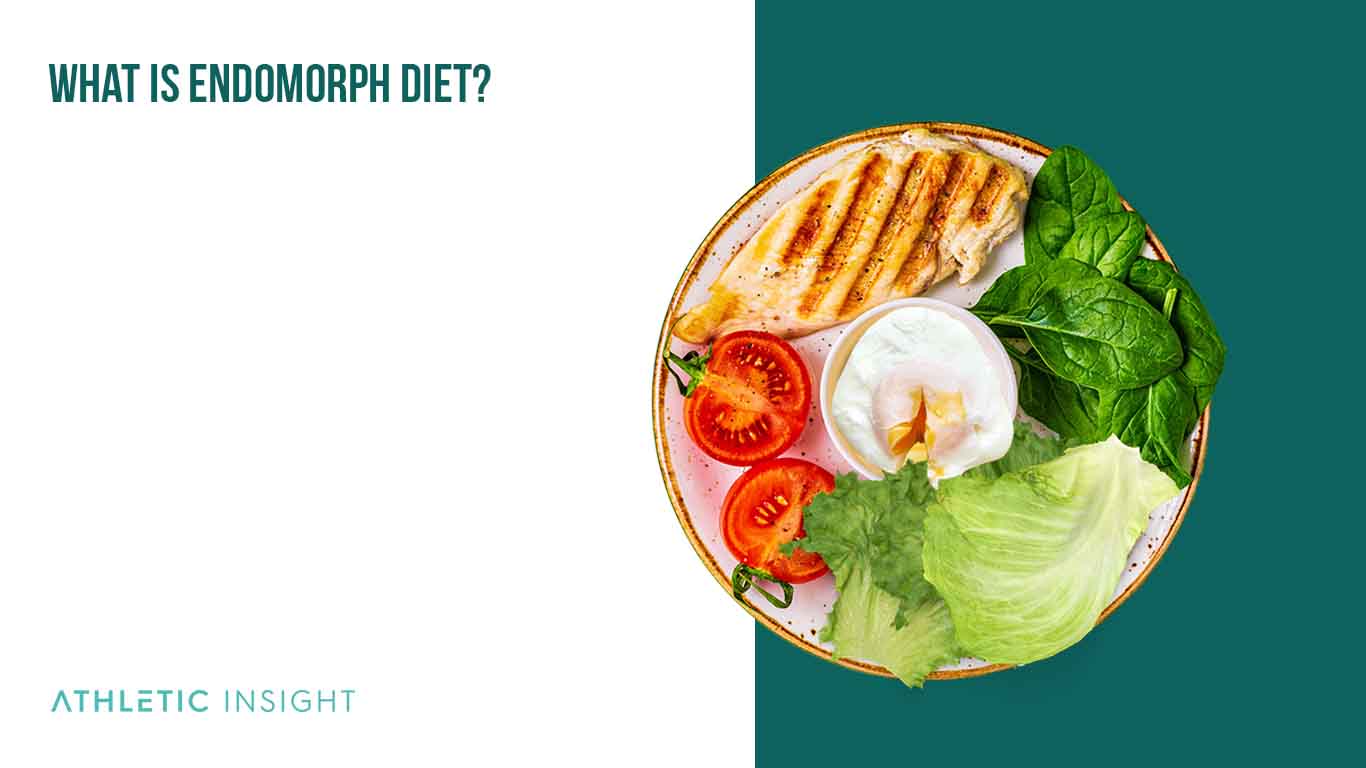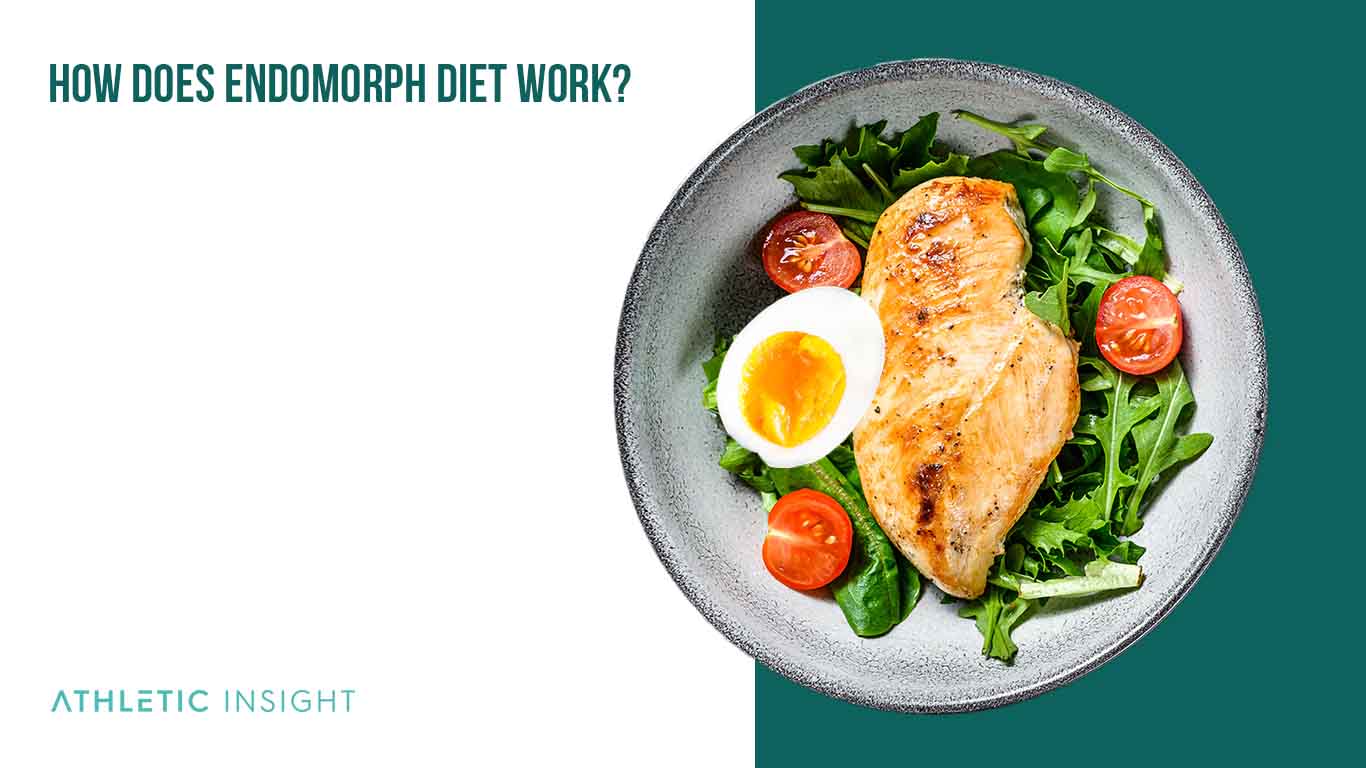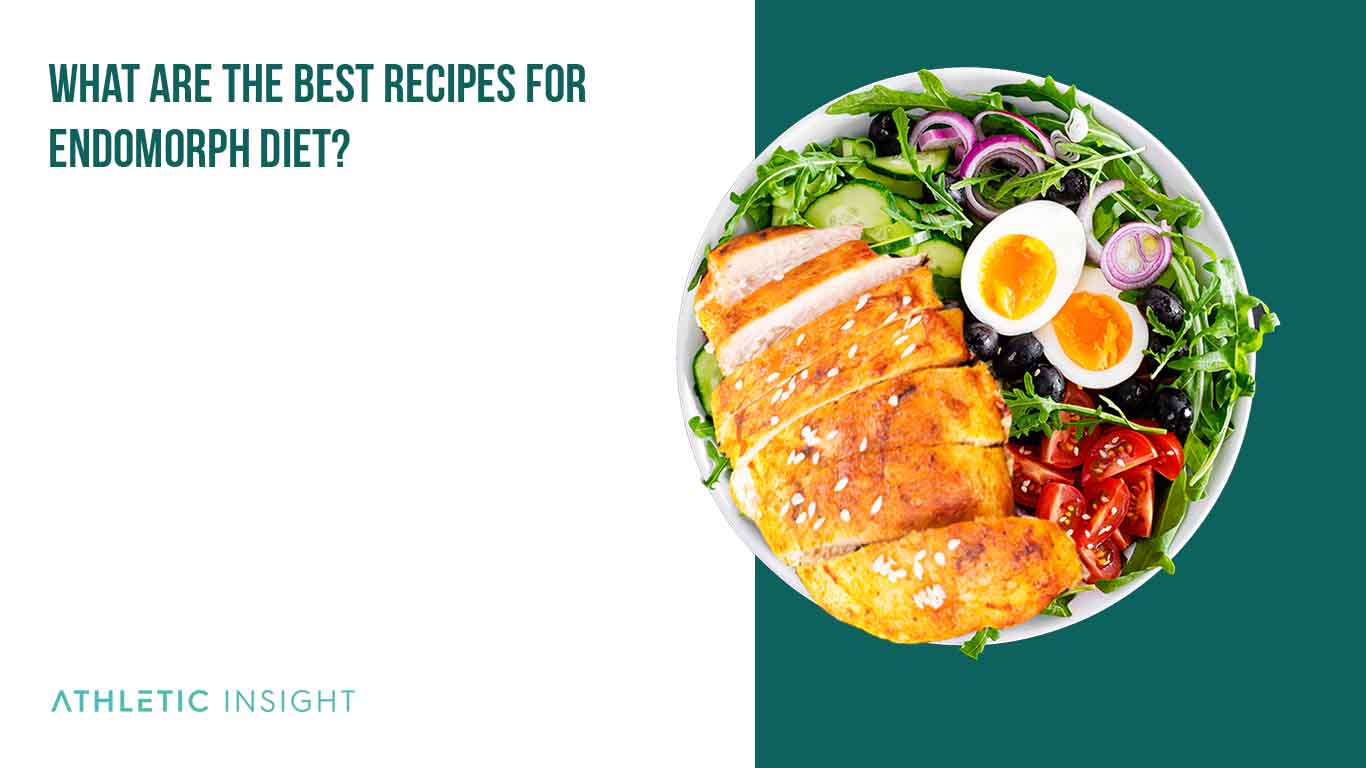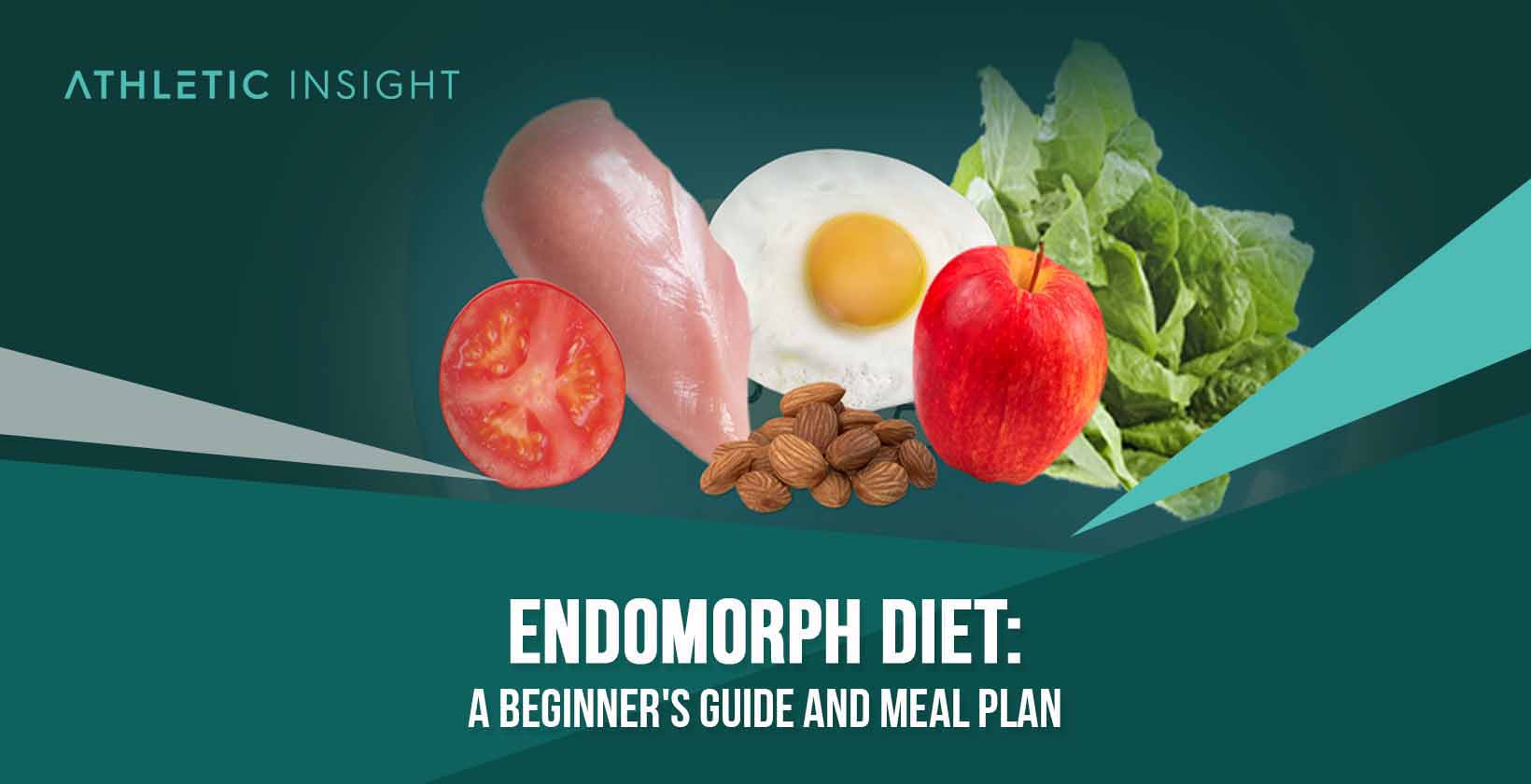The endomorph diet is an eating plan that is tailored towards a person who has an “endomorph” body type. An endomorph body type is a person who has a curvy, broad, and larger skeletal structure. Since an endomorph has a higher propensity to store fat and have a wider body shape, endomorphs must avoid eating refined carbohydrates and processed foods.
The importance of the endomorph diet is to keep your weight at a healthy level and prevent excess fat buildup. Endomorphs have a tendency to have excess fat around the waist and visceral fat that can harm your overall health.
The benefits of the diet are a healthier body fat level, lower body weight, higher metabolism, less consumption of sugars, and lower consumption of “bad” carbs. A person can begin the endomorph diet by cutting out processed foods, sugars, and refined carbohydrates. Individuals can begin the diet by reducing the number of carbs consumed per day or per meal.
The most popular endomorph diet types include meso-endomorph diets, which is a hybrid body type that has a bigger muscle mass, but doesn’t have defined muscles. In this case, using some aspects of the traditional endomorph diet, combined with cardiovascular training and strength training, can help a person lose weight and obtain a healthy body type.
What is an Endomorph Diet?
The endomorph diet is a meal plan of eating fewer carbs to help prevent excess fat buildup and lower overall body weight. Individuals following an endomorph diet should focus on reducing calories, eating more protein, eating healthy fats, and consuming low-carbohydrate nutrients.

How does an Endomorph Diet Work?
The endomorph diet works by people cutting out some types of food, increasing their intake of other nutrients, and focusing on reducing overall caloric intake. People can begin the endomorph body type diet by cutting down on their carb intake, increasing their intake of healthy protein, and increasing their intake of healthy, omega-3 fatty acids.

Some endomorphs can eat 35% protein, 35% fats, and 30% carbohydrates to maintain a healthy weight. The particular organ of the body influenced by the endomorph diet is the pancreas, since this organ affects blood glucose levels.
The initial reaction to the endomorph diet is a quicker breakdown of fat in the body when compared to carbs. Low-carb diets cause the person to break down fat into ketones for bodily processes and energy. Initial reactions can include negative side effects, such as nausea, fatigue, and dizziness.
What are the health benefits of an Endomorph Diet?
There are numerous benefits of the endomorph diet for people who are trying to lose weight and avoid excess fat gain. The benefits of the endomorph diet include a reduced risk of cardiovascular disease, lower blood pressure, and boosts skin health.
- Reduce the risk of cardiovascular disease: One of the main perks of the endomorph diet is the reduction of cardiovascular disease risk factors. Low levels of carb consumption can prevent heart disease.
- Lower blood pressure: Endomorphs are more likely to have higher blood pressure levels. Lowering carb intake and lowering body fat levels can help lower blood pressure, which reduces the risk of heart attacks and strokes.
- Boosts skin health: A diet high in protein and healthy fats can help a person have clearer and brighter skin. Furthermore, consuming high-nutrient foods and eating enough fruits and vegetables can help people on the endomorph diet have better skin than when consuming processed foods and sugar.
What are the health risks of an Endomorph Diet?
Although there are many positives of the endomorph diet, there are a few health risks as well. The risks of the endomorph diet is that it is hard to stick with, refined carbs are bad, too much fat may lead to weight gain.
- Hard to stick with: Cutting out carbs leads to lower energy and a less-satisfied feeling when eating. If an endomorph has to reduce their carb intake too drastically, this can cause them to only stick with the diet for a short time frame. Furthermore, eating in a caloric deficit is difficult to maintain for long periods of time to lose weight successfully.
- Refined carbs: Even though reducing carb consumption can promote weight loss, eating refined carbs (like white starches) is still bad for your health. Those who eat an endomorph diet will have to focus on eating complex carbohydrates, like quinoa or brown rice.
- Healthy fats: Eating too much fat can lead to excess calorie consumption, which can cause weight gain. Individuals following an endomorph diet should focus on eating only monounsaturated fats, such as avocados.
How to do an Endomorph Diet?
The number of calories consumed on an endomorph diet depends on your basal metabolic rate and activity level. Those on an endomorph diet should consume 40% of their calories from protein, 40% from fat, and 20% from carbohydrates. Those who need to lose weight should reduce their overall calorie intake by 300-500 calories per day.
The proposed time frame for eating an endomorph diet depends on a person’s overall goals and health. If eating an endomorph diet leads to lower body fat levels and better overall health, individuals can continue eating a low-carb meal plan.
The best practices to follow while on an endomorph diet include the following. People should eat foods that are high in complex carbohydrates and low in simple carbohydrates. In addition, eating healthy protein sources, like heart-healthy fish, organic chicken, and lean cuts of red meat, are preferable. Furthermore, those following an endomorph diet should only eat low-carbohydrate fruits, such as melons.
What are the foods that you can eat while on a Endomorph Diet?
There are certain food types you can eat while on an endomorph diet. Check out this endomorph diet food list.
- Fruits: low carbohydrate options, like melon and berries
- Vegetables: celery, cauliflower, carrots, spinach
- Grains: chickpeas, kidney beans
- Legumes: lentils
- Nuts: Hazelnuts, walnuts, cashews, pistachios
- Seeds: Chia seeds
- Healthy fats: Nuts, yogurt, milk
- Proteins: Salmon, chicken, lean red meat
The most important food to eat on an endomorph diet is lean meat and fish (turkey, chicken, and salmon), dairy (yogurt and milk), fruits and vegetables (berries, asparagus, zucchini, onions, greens, tomatoes), nuts and seeds (nut butter, almonds, pumpkin seeds), and starchy vegetables (squash, quinoa, sweet potatoes).
What are the foods that you should avoid while on a Endomorph Diet?
People should avoid certain foods while following the endomorph diet.
- Meat: Processed meats, fatty cuts of meat, bacon
- Poultry: Non-organic chicken, fried chicken
- Fish and shellfish: Fried fish, canned fish
- Meat-based ingredients: Meat sauces and gravies
- Dairy products:Full-fat yogurt and dairy
Endomorph dieters need to avoid processed foods, high-sugar foods, fried meat, canned fish with added sodium, and meat-based sauces and gravies. All of these food items have high levels of calories, excess carbohydrates, and added sugar.
Who should do the Endomorph Diet?
People who are diabetic, overweight, and have a large body type should do a meso endomorph diet. Women who are overweight can follow an endomorph female diet or a meso endomorph female diet plan.
There are certain instances that make people do the endomorph bodybuilding diet. If a person has a higher percentage of body fat in the visceral region, they should consider starting this ecto endomorph diet to lower their Body Mass Index to a healthy level.
What are the Best Recipes for an Endomorph Diet?
There are multiple recipes for an endomorph bodybuilding diet plan. Endomorphs can follow an endomorph diet sample menu and use this example of endomorph diet.

- Omelet: 2 scrambled eggs, 1 egg white, spinach, and peppers
- Kale salad: Kale with olive oil, cucumbers, peppers, and grilled salmon
- Chicken with noodles: Grilled organic chicken with zucchini noodles
- Stir fry: Grilled chicken, brown rice, and bell peppers
- Turkey Tacos: Ground lean turkey with lettuce and avocado
What is a Sample Endomorph Diet Plan?
People who want to follow the best diet for endomorph body types should use an endomorph diet plan pdf to achieve optimal health.
Breakfast Options
- Day 1: Frittata — eggs, spinach, tomatoes, and onions
- Day 2: Smoothie — Low-fat milk, Greek yogurt, berries, and banana
- Day 3: Hard-boiled eggs with berries
Snack Options
- Day 1: Greek yogurt with almonds
- Day 2: Protein shake with almond milk
- Day 3: Carrots
Lunch Options
- Day 1: Quinoa with mixed vegetables
- Day 2: Turkey, vegetables, and avocado on whole-wheat bread
- Day 3: Lentil salad with tomatoes, olives, and vegetables
Dinner Options
- Day 1: Vegetable and black bean soup
- Day 2: Shrimp and vegetable stir fry
- Day 3: Grilled salmon and steamed asparagus
What are the facts about the Endomorph Diet?
There are some common facts people must know before beginning the endomorph carb cycling diet.
- Low in Saturated Fat & Cholesterol: The endomorph diet is low in saturated fat and cholesterol. Even specialty eaters can follow the endomorph diet plan vegetarian option, paleo diet plan for endomorphs, or macro diet plan for endomorph body types.
- May Cause Temporary Low Energy: The first week of the endomorph diet usually brings lower energy levels due to a switch to ketosis, better skin complexion, and potential fat loss.
- Low Cost: The endomorph diet is a low-cost meal plan that emphasizes making your own meals. The endomorph diet focuses on a balance of carbohydrates, proteins, and fats, so people can buy grains, lean protein, and complex carbohydrates in bulk to save money.
- Similar to Atkins Diet: The endomorph diet compared to the Atkins diet shows similarities. The Atkins diet is a low-carb and high-fat diet to increase metabolism. The endomorph diet is a low-carbohydrate diet that helps endomorph body types lose weight.
- Weight Loss: The endomorph diet is good for weight loss because it can lower overall carbohydrate consumption to balance blood glucose levels and reduce body weight.
Is Endomorph Diet considered a healthy diet?
Yes, the endomorph diet is a healthy diet. The endomorph diet helps overweight individuals, or those with a higher body fat level who have trouble losing weight, begin to burn excess body fat by turning fat and protein into energy sources.
By eating lean protein, healthy fats, and low carbohydrates, people can limit simple carbohydrates, cut out processed foods, and reduce sugar intake. Overweight individuals can combine an endomorph diet and exercise to lose weight.
Is Endomorph Diet expensive?
No, the endomorph diet is not expensive. The endomorph diet makes it possible for people to buy grains, proteins, and fats in bulk to save money and avoid buying snacks, processed foods, and sugary drinks.
Does the Endomorph Diet contain artificial sweeteners?
No, the Endomorph Diet does not inherently contain artificial sweeteners. It promotes the consumption of whole, nutrient-dense foods, and it is often recommended to avoid artificial sweeteners as they can lead to increased sugar cravings and consequent overeating.
Although some individuals might choose to incorporate sugar substitutes to satisfy their sweet tooth while limiting carbohydrate intake, this is a personal choice rather than a requirement of the diet. It underscores the flexible nature of the Endomorph Diet, which is customizable to individual preferences and nutritional needs.
What’s the Endomorph Diet’s carbohydrate intake limit?
The carbohydrate intake limit in the Endomorph Diet is approximately 30-40% of total daily caloric intake. This is lower than the general dietary guidelines which propose that 45-65% of daily calories come from carbohydrates.
By limiting carbohydrate intake, the Endomorph Diet aims to control blood sugar levels and facilitate weight loss, a crucial element for those with the endomorphic body type. Yet, this does not suggest an absolute avoidance of carbohydrates. Rather, it advocates for the consumption of complex carbohydrates that provide sustained energy and help maintain satiety.
What are the Alternatives to Endomorph Diet?
There are four main alternatives to the endomorph diet such as the Ketogenic diet, Paleo diet, Mediterranean diet, and Intermittent Fasting. All of these diets will provide similar results as that of the Endomorph diet.
- Ketogenic Diet: This diet further restricts carbohydrate intake, placing more emphasis on fats as the primary energy source.
- Paleo Diet: It focuses on foods that were presumably eaten by early humans, cutting out processed foods, grains, and dairy.
- Mediterranean Diet: This is a balanced diet promoting fruits, vegetables, lean proteins, and healthy fats, considered beneficial for all body types.
- Intermittent Fasting: This isn’t a diet per se, but a pattern of eating that alternates between periods of eating and fasting.
Does the Endomorph Diet work to get abs?
While the Endomorph Diet can facilitate weight loss and improve body composition, it’s not a guaranteed formula for getting abs. Achieving a well-defined abdominal musculature requires a comprehensive approach, combining targeted exercises, overall body fat reduction, and a balanced diet.
While the Endomorph Diet’s focus on lean proteins and limited carbohydrates can support these objectives, it is the incorporation of regular, strategic exercise that usually proves crucial for defining abs. Therefore, the diet itself is just one component of a more holistic approach.
Is Endomorph Diet combined with Exercise possible?
Yes, the Endomorph Diet can be effectively combined with exercise. In fact, it is often recommended to pair the diet with regular physical activity. This combination can enhance weight loss, improve body composition, and boost overall health.
Exercise aids in creating a caloric deficit, accelerating fat loss, and building lean muscle mass. Furthermore, certain types of exercise, such as strength training, can help increase the metabolic rate, thus optimizing the effects of the Endomorph Diet.
Is Endomorph Diet combined with Supplements possible?
Yes, the Endomorph Diet can be combined with dietary supplements, albeit with careful consideration. Supplements should never replace a balanced diet but can be utilized to fill nutritional gaps, enhance workout performance, or support specific health needs.
For instance, protein supplements can assist in reaching protein intake goals, while multivitamins can ensure micronutrient requirements are met. It is, however, essential to consult with a healthcare provider before introducing any new supplement regimen to ensure safety and efficacy.
What is the difference between Endomorph and Mesomorph Diet?
The Endomorph Diet and Mesomorph Diet differ primarily in macronutrient distribution. While the Endomorph Diet emphasizes a lower carbohydrate intake, the Mesomorph Diet can accommodate a balanced distribution of macronutrients, as individuals with this body type generally have a moderate metabolism and can effectively balance weight gain and loss.
The Mesomorph Diet tends to focus on equal parts of proteins, carbohydrates, and fats, whereas the Endomorph Diet suggests a higher proportion of proteins and fats to carbohydrates. These variations reflect the different metabolic characteristics and body composition goals inherent to the two body types.
What is the difference between Endomorph and Ectomorph Diet?
The primary distinction between the Endomorph and Ectomorph Diet lies in the total caloric intake and carbohydrate consumption. Ectomorphs, characterized by a fast metabolism and a lean body structure, often struggle with weight gain. As a result, the Ectomorph Diet is generally higher in total calories, with a substantial emphasis on carbohydrate intake to support energy needs and promote weight gain.
Contrarily, the Endomorph Diet focuses on reducing carbohydrate intake and increasing protein to assist in weight loss and management. Both diets are designed to cater to the unique metabolic rates, dietary needs, and physical goals of their respective body types.



